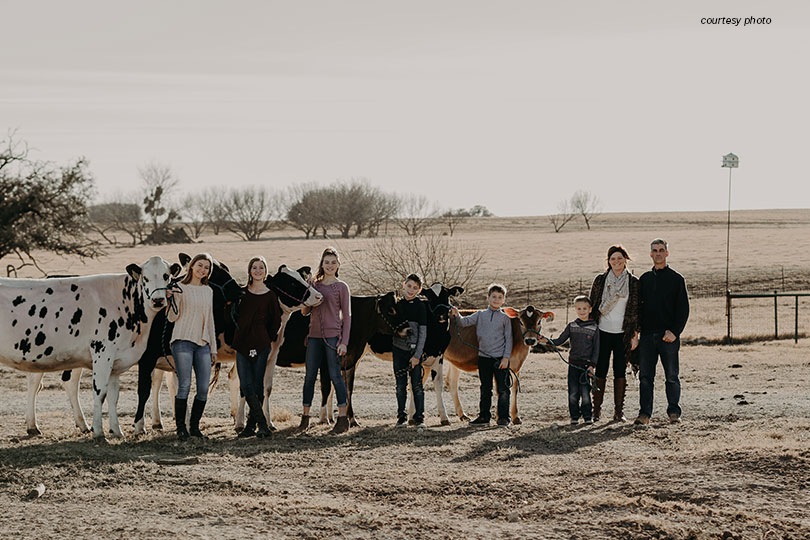By Jennifer Dorsett
Field Editor
After 28 years of owning and operating a dairy farm, Sonya and Johan Koke know all too well there will be ups and downs in the milk market. But they never expected anything like the COVID-19 pandemic.
“Initially, 2020 looked really good for milk prices, but with the closing of schools, restaurants and hotels, consumption is way lower,” Sonya said. “It was very frightening in March going into April when others were dumping milk, and it was heartbreaking because it’s good, nutritious food being wasted when some people could really use it.”
Manufacturing plants designed for bulk orders couldn’t be switched overnight to smaller retail packages which added more stress to an already struggling industry.
But the support programs implemented by the U.S. Department of Agriculture (USDA) were helpful for families like the Kokes.
They were also able to use the Small Business Administration’s (SBA) Paycheck Protection Program (PPP), but it didn’t come without challenges.
“It was very confusing. They wouldn’t let the dairy industry use PPP initially, because there was some misunderstanding of the revenue thresholds,” she said. “I called [Dairy Farmers of America] to speak with our legislative representative to make sure we had everything right, but when I called four or five of the local banks trying to apply, they still didn’t have clarification on whether we qualified. It took a week to 10 days longer just to get the bank on board.”
The initial PPP guidelines were not friendly to agricultural enterprises, according to agricultural organizations like the American Farm Bureau Federation. This led many banks to tell potential agricultural applicants they could not qualify. Later, SBA clarified farmers were eligible for PPP if they had 500 or less employees or fit within the revenue-based sized standard.
“At first, they were telling us that our revenue would basically have to be what we would make with only 180 cows. There might be some organic or cheesemaker dairies with that small of a herd, but most producers cannot make a living on 180 cows. We couldn’t feed America with that small of a herd,” Koke said.
Eventually, the SBA and lending institution were able to process the family’s application for their dairy.
“Thankfully, we were able to keep paying all of our employees. And so far, they have all stayed healthy and work has been going on as usual,” she said. “We’ve just been communicating with them more, asking them to stay home if someone in their house is sick, that sort of thing. It’s business as usual, just with a lower milk price.”
But they didn’t escape the economic damage unscathed.
“We had to sell some of our milk cows to halt production. We can’t just stop a milk cow from producing overnight,” Koke said. “On top of that, it was spring flush. Because of the ideal temperatures in the spring, cows are at their optimal comfort level, so they’re most productive at this time of year. It was really frustrating to have the pandemic hit right at that same time.”
Livestock prices were also depressed because of COVID-19, so the cows they sold brought a lower price, which affects the dairy’s bottom line, too.
Koke said it was difficult to see bare shelves at the grocery store while her family was busy trying to slow production and figure out what to do with excess milk.
“It was very frustrating to go to the store and see the empty shelves and have to hear about people dumping milk at the same time,” she said. “I watched families with children have to put back gallons of milk because the stores were limiting purchases, while I watched families at dairies dumping milk on the ground because there was no place for it to go.”
That, more than anything, is what Koke wants consumers to understand about dairy farming—it’s a family affair, and that’s what pushes her family to keep farming.
“A lot of people don’t understand that almost all dairies are family farms. These are families that are hurting, not just the manufacturer on the milk carton,” she said. “Our milk and the milk from dairies across the nation is one of the most wholesome, minimally-processed, nutritious, healthy products out there. We do everything we can to produce high-quality milk for families just like ours.”


Our sons went to Tarleton State and one of them took a part time job working on a dairy near there, so we understand perfectly how difficult this has been for dairymen and how hard the whole family works all year long. I’m glad it has finally worked out, but the waste before it did was phenomenal.
We only raise a few cows on our ranch in Caldwell County, but are about to be overrun by Austinites moving this way. We miss Stephenville and may consider moving there. God bless all of you hard working people!